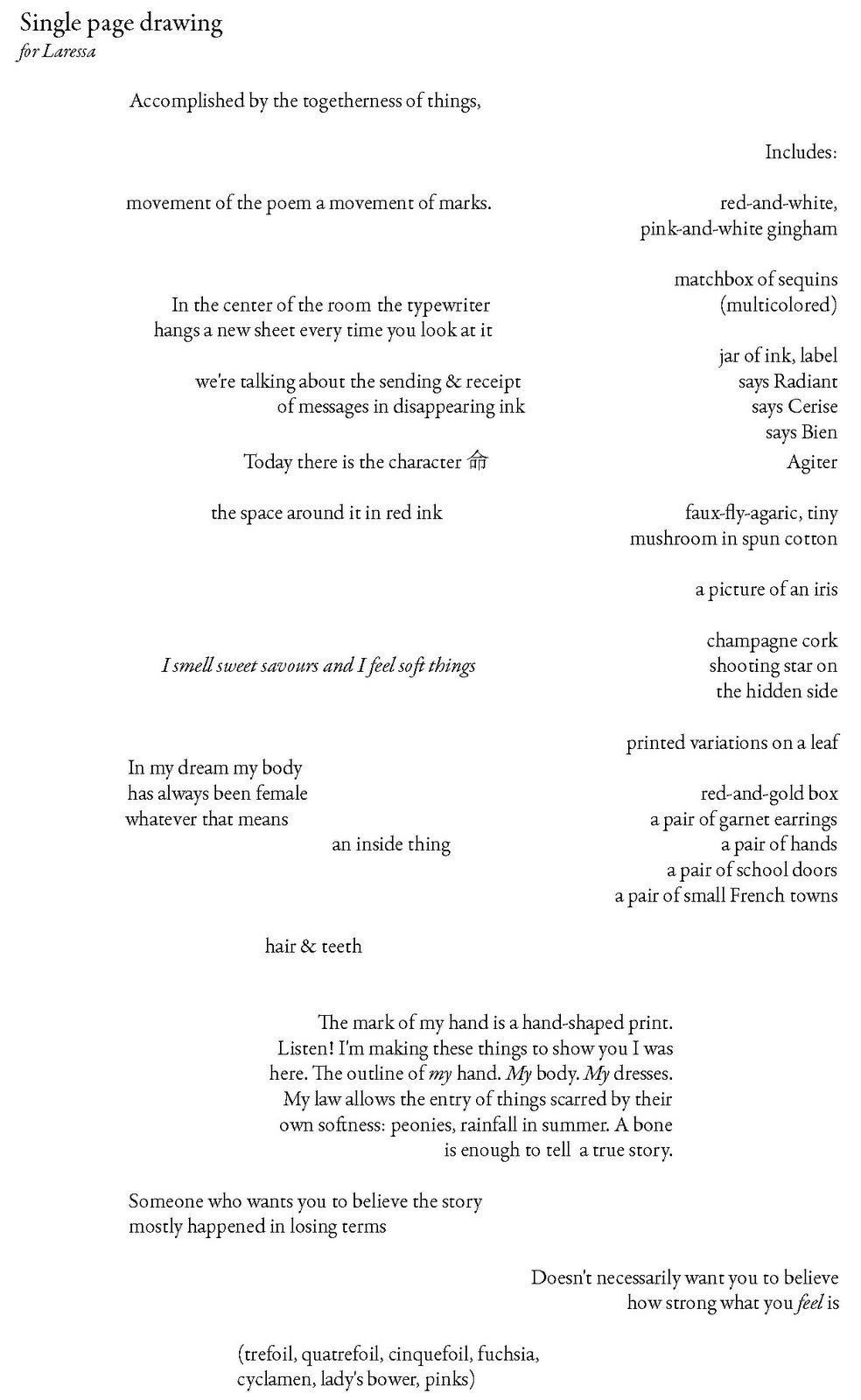In Their Own Words
Éireann Lorsung’s “Single-page drawing”


On "Single-page drawing"
Probably "Single page drawing" began in 2005, when an acquaintance introduced me to Cy Twombly's paintings and prints. That introduction marked a shift in my ability to identify things as language, and in my tendency to think of language as something to be seen as much as read, to be felt as much as known—to be felt as a way of knowing. Not that I began writing the poem then. But every time since then when I have stood in a room with Cy Twombly's work, I have felt two impulses: to largeness and to inclusion.
The freedom of a huge canvas is the freedom to make marks as large as the body, or larger. The freedom of layers in a print is the freedom of depth: to continue complicating or intensifying the information on a page not laterally (on the plane) but vertically. Thing on top of thing. Twombly's paintings and prints lodged something in me about density and texture and mark-making.
Around this time I was also reading my friend Laressa Dickey's poems. Laressa writes very long poems, book-length objects. I was very young in many ways and one of the ways was my inability to conceive of the poem outside of an amount I could hold in my hand. Laressa's work showed me how a long poem can accumulate, and, more than that, how a larger space means the poem can move. It also showed me ways of being fearless despite being afraid, and it showed me how a real vernacular language is a manifestation of attention to one's people and places.
A lot happens between my introduction to Cy Twombly in 2005 and the spring of 2011 when I write "Single page drawing". Both Laressa and I leave the US; she lives in Germany, I live in England. While she's waiting for her residency papers, Laressa stays in our house for a month.
It might not be for everyone, but I love having long-term writerly houseguests. I love knowing that someone else is writing. I like being able to offer another writer quotidian support—dishes, cooking—and I love that if a writer is staying with us, there'll be conversation about writing and books and ideas. The community that's created when writers live with us like family is one of the most incredible things I've experienced. And while Laressa stays with us, I have one of those periods of sustained and consistent writing that make everything feel possible. At this time I begin to think through my idea of 'texture' as a poetics, and, coincidentally, I go to the Tate Modern while I'm in London for a day, to spend time with Twombly's Natural History prints. Seeing his work makes me want to make a poem that contains a botanical drawing and a red elliptical scribble and marks that look like numbers and a vellum square, all on one page. Where 'page' is a space without a single determined size.
On the train home, I idly list things (objects, atmospheres, texts) that fall within the texture I call 'pink'. (I feel things in color.) 'Pink' is capacious, female, ferocious, attentive, stubborn, recalcitrantly attached to the minor. I decide to make a poem for Laressa and for Cy Twombly, imitating as best I can the qualities of Twombly's work that I admire. A tribute poem. The poem will have layers of things, will not be perfectly linear, will have image-marks and text-marks.
This is 'Single page drawing', which I hope behaves in a Twomblyish manner, layering images and marks and refusing to draw a conclusion. For me it is about writing together, or about the miraculous appearance of marks on paper, or about being taught to write and see and think by the artists and writers I love, or about feminized and dismissable things (the value I find in them), or about ways of knowing other than knowing, or about the pleasure of seeing and touching. 'Single page drawing' is for me a private mneumonic catalogue of that month with Laressa in England; I hope it is also an accumulation of texture, a transference to the reader of possible resonances between objects and words.


